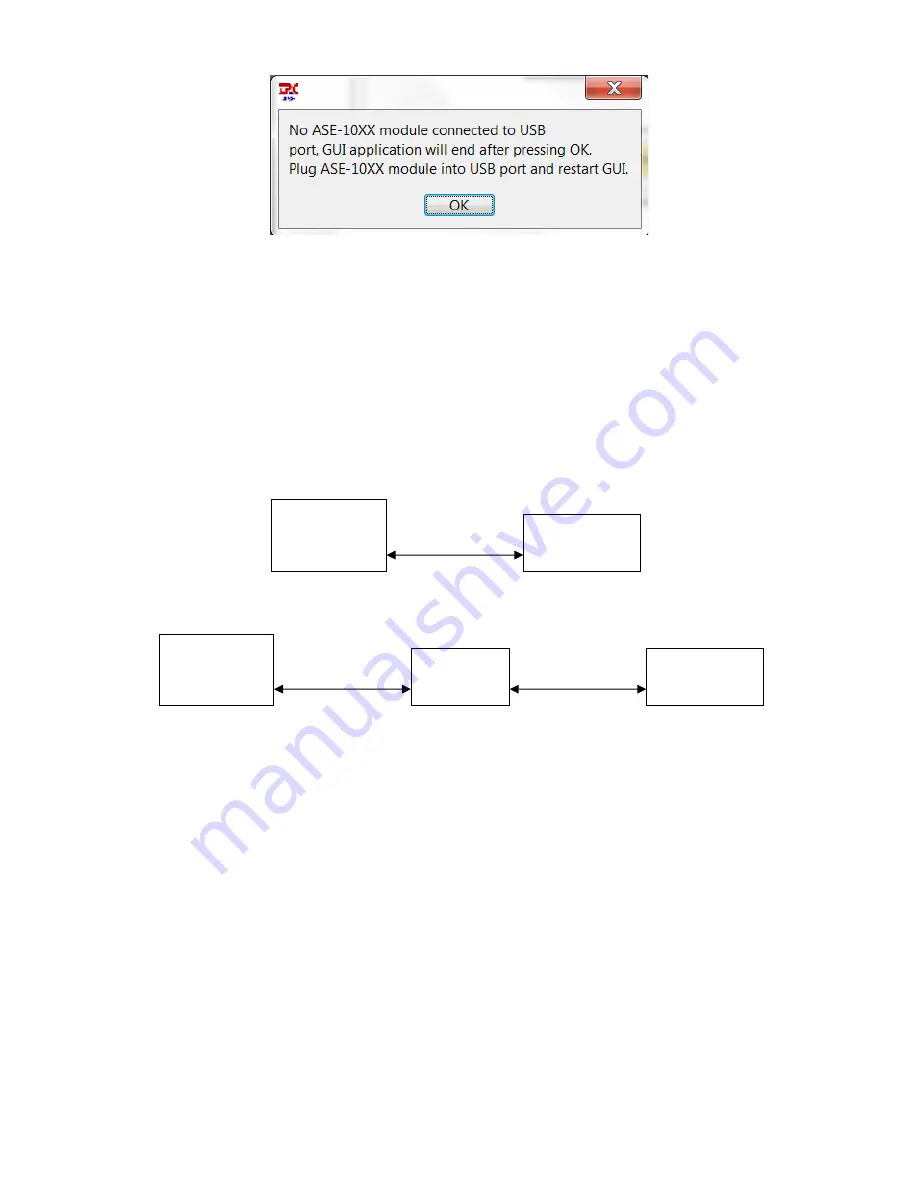
12
Figure 5.2-2 - Error Message Displayed When ASE-1019 is Not Connected to USB Port
6.0
Ethernet Based Control/Status Setup and Initial Power-On
An external computer with a 10/100BaseT Ethernet port is required to provide control and status
for the ASE-1019 module using a standard HTML browser (Chrome, Firefox, Internet Explorer)
based GUI. When using Ethernet communications to control/status the ASE-1019 module, there is
no other special software required, the browser (Chrome, Firefox, Internet Explorer) is sufficient.
There are two primary ways to configure the hardware connection between the external computer
and the ASE-1019 module, both are shown in Figure 6.0-1. Use the included Ethernet cable and
setup the hardware connection in either of the two ways shown in the figure.
10/100BaseT
Ethernet Cable
10/100BaseT
Ethernet Cable
10/100BaseT
Ethernet Cable
External
Computer
with Browser
ASE-1019
Module
OR
(direct connection)
External
Computer
with Browser
Ethernet
Router
ASE-1019
Module
Figure 6.0-1 - Two Methods of Using an Ethernet Interface to the ASE-1019 Module
Provide power to the module by plugging the +5V AC/DC adapter into a standard 120 VAC wall
outlet then into the module’s DC port. The LED on the top side of the module should illuminate to
a green color indicating that DC power is being supplied to the module. If the LED does not
illuminate, it is an indication that DC power is not being supplied to the module.
6.1
Initial Setup for Ethernet Control/Status
The ASE-1019 module is shipped in Static IP address mode to allow communication via a direct
connection to a standalone computer as shown in the upper block diagram of Figure 6.0-1. In
order to initially communicate with the ASE-1019, setup the Ethernet port of the standalone
computer as given in Table 6.1-1.



























